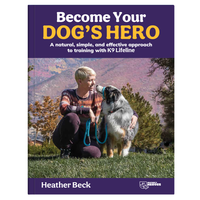Understanding Leash Reactivity and Its Impact on Walks

Introduction
Picture this: You’re out for a walk with your dog, enjoying the fresh air when suddenly, your usually calm companion transforms into a barking, lunging whirlwind at the sight of another dog. This scenario might sound too familiar to many dog owners dealing with leash reactivity. Understanding leash reactivity and its impact on your walks is crucial, not only for your sanity but for your dog’s well-being too.
Leash reactivity can turn a pleasant stroll into a stressful ordeal, but with the right knowledge and tools, you can reduce this stressful behavior. Let’s delve into what leash reactivity is, why it happens, and how you can guide your furry friend to overcome it.
Causes of Leash Reactivity
Common Triggers
Leash reactivity often stems from specific triggers that set off your dog’s reactive behavior. These triggers can vary from one dog to another but commonly include:
- Other dogs
- Strangers
- Bicycles
- Cars or motorcycles
- Loud noises
Underlying Issues
Understanding the root causes of leash reactivity is key. Dogs may react out of fear, anxiety, frustration, or even excitement. For some dogs, being on a leash can feel restrictive, heightening their response to perceived threats. Lack of socialization and past negative experiences can also contribute to this behavior. Recognizing these underlying issues can help you address the core of the problem rather than just the symptoms.
Impact on Walks
Stress for Dogs
Leash reactivity doesn’t just make walks challenging for you; it’s also stressful for your dog. Constantly reacting to triggers can keep your dog in a heightened state of anxiety, which isn’t healthy in the long run. This stress can manifest in various ways, such as increased aggression, fearfulness, or even physical ailments.
Owner’s Experience
As a dog owner, dealing with a leash-reactive dog can be frustrating and sometimes embarrassing. It can make you dread walks and avoid taking your dog out altogether. This isn’t just inconvenient; it also means your dog misses out on important exercise and socialization opportunities.
Bonding
Leash reactivity can strain the bond between you and your dog. Walks should be a time for bonding and mutual enjoyment. When they become a source of stress, it can negatively affect your relationship. Addressing leash reactivity helps restore these positive interactions, strengthening your bond.
Identifying Leash Reactivity
Signs to Look For
Identifying leash reactivity starts with recognizing the signs. Here are some behaviors to watch for:
- Barking and growling at specific triggers
- Lunging towards people, animals, or objects
- Excessive pulling on the leash
- Whining or whimpering
- Stiff body posture or raised hackles
To learn more about reading dogs’ emotions and body language, take our free online course.
Patterns
Noticing patterns in your dog’s behavior can provide valuable insights. Pay attention to when and where these reactive episodes occur. Is it always at the same spot? Around the same types of triggers? Understanding these patterns can help you better guide your dog through these challenges more effectively.
Reducing Leash Reactivity
Training Techniques
One of the most effective ways to manage leash reactivity is through training. Our free online Learning Portal can walk you through the training process. Here are the techniques we recommend:
Patience
Before heading out on a walk, patience will be your best “tool”. When being patient and understanding you will have a calmer response to your dog's reactivity and not add more energy to bad behavior.
Stay Calm
Dogs are highly sensitive to their handler's behavior. If you are stressed and panicking, your dog is likely to mirror those feelings. Stay calm and composed to help your dog remain relaxed.
Desensitization
Start your walks in areas of little to no distractions to set you and your dog up for success and build confidence before moving into more challenging areas.. Over time, decrease the distance while keeping your calm. This helps them become accustomed to the trigger without reacting.
Tools and Equipment
Using the right tools can make a significant difference in calming leash reactivity. Unfortunately, Some tools may even increase the dog's reactivity. We have found the best, most effective tool to calm leash reactivity is The Sidekick® by Heather's Heroes. This innovative leash combines a head collar and leash in one versatile tool. It enables gentle, natural communication with your dog..
Professional Help
If your dog’s reactivity is severe or you’re struggling to see progress, it might be time to consult a professional. Professional dog trainers have the expertise to design personalized training plans and offer hands-on guidance. Don’t hesitate to seek their help; sometimes a fresh perspective can make all the difference. We recommend connecting with one of our Heather’s Heroes Certified Trainers.
Practical Tips for Walks
Preparation
Proper preparation is crucial for successful walks. Ensure both you and your dog are mentally and physically ready. This might mean a few minutes of some calming exercises before heading out. To learn more about how to calm your dog before walks, check out Become Your Dog’s Hero.
Routes and Timing
Choosing the right route and time for your walks can help minimize encounters with triggers. Opt for quieter streets or parks during off-peak hours. This reduces the chances of running into other dogs or distractions until you and your dog are ready for those challenges.
Calm Environment
Creating a calm environment starts before you even leave the house. Use a calm, assertive tone when putting on your dog’s leash and heading out the door. Avoid hyping up your dog with high-pitched voices or excessive excitement.
Consistent Practice
Consistency is key when managing leash reactivity. Regular, short training sessions are more effective than sporadic, long walks. Be patient and persistent; progress may be slow, but with consistent effort, you’ll start to see improvements.
Conclusion
Understanding and managing leash reactivity is a journey that requires patience, empathy, and dedication. By recognizing the causes, impacts, and signs of leash reactivity, and by implementing effective training techniques and practical tips, you can transform your walks from stressful to enjoyable.
Remember, every step you take towards addressing leash reactivity is a step towards a better quality of life for both you and your dog. With the right approach, you can strengthen your bond, reduce stress, and enjoy the simple pleasure of a peaceful walk.
If you need additional support, don’t hesitate to reach out to us. We want to help you become your dog’s hero! Together, we can ensure our dogs live happy, fulfilling lives, free from the stresses of leash reactivity.









Leave a comment